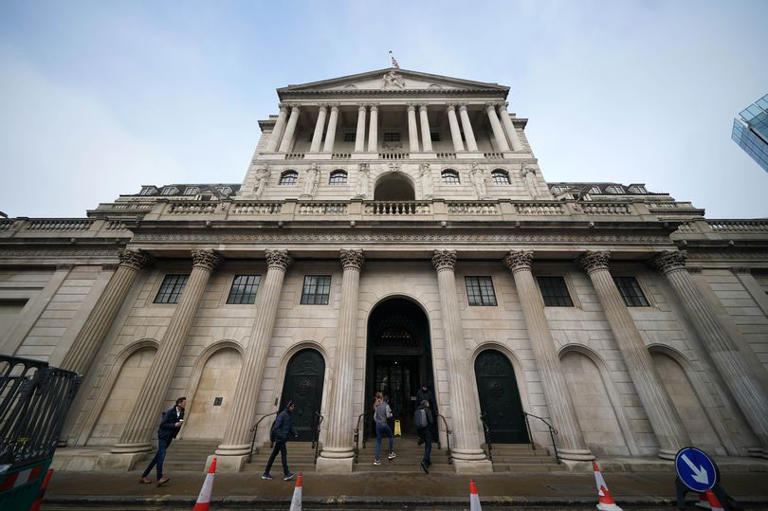“Bank of England’s 5 Powerful Fixes for Economic Forecasting Success”
Table of Contents
ToggleBank of England: A Critical Review of Economic Forecasting
Explore the critical flaws in the Bank of England’s economic forecasting highlighted by former US Federal Reserve Chairman Ben Bernanke. Discover the challenges with outdated IT systems, inexperienced staff, stale data, and confusing communication methods.

© Provided by The Telegraph
Bank of England’s IT Struggles
The Bank of England is facing some serious hurdles, according to a recent review by former US Federal Reserve Chairman Ben Bernanke. One major issue? Their outdated IT systems. Let’s dive into what’s going on.
Outdated Software, Modern Problems
Bernanke’s review found that the Bank of England’s forecasting tools are seriously lacking. Some of their key software is outdated and missing important features. This means that economists spend way too much time doing manual tasks like data entry, instead of actually analyzing the information.
Manual Madness
Imagine having to copy numbers from one system to another, over and over again. That’s what economists at the Bank of England are dealing with because of their outdated systems. It’s not just a waste of time; it’s also a waste of the Bank’s highly educated staff.
Taking Action
The Bank’s Governor has acknowledged the issue and is taking steps to address it. They’ve started a £30 million system upgrade, which includes moving to a cloud-based IT setup. Hopefully, this will help streamline their processes and free up time for more important tasks.
Staffing Struggles at the Bank of England
Another big problem facing the Bank of England? Inexperienced staff.
Jumping Around
At the Bank of England, if you want to move up the career ladder, you have to jump around within the organization. This means that people are constantly switching roles just to get a pay rise. It’s not exactly an ideal situation.
Lack of Expertise
Bernanke pointed out that this constant jumping around means that staff don’t get the deep expertise they need in their areas. And when it comes to setting interest rates, that expertise is crucial. Without it, policymakers may not fully understand the implications of their decisions.
Finding Solutions
The Bank of England is aware of the issue and is working on ways to incentivize staff to stay in one area and build expertise. It’s a tough problem to solve, but hopefully, they’ll figure it out soon.

Data Dilemmas: Stale Data at the Bank of England
Stale data is another headache for the Bank of England. Let’s explore what’s going on.
Outdated Models
The Bank of England’s core economic model, Compass, has some serious shortcomings. It doesn’t fully capture the complexities of the modern economy, and it struggles to adapt to changing conditions.
Too Little, Too Late
One of the biggest problems with the Bank’s forecasting models is that they rely on data that’s already outdated by the time policymakers review it. This means that their forecasts may not be as accurate as they could be.
Looking Ahead
The Bank of England is aware of the issue and is working on ways to improve their forecasting models. It’s a tough problem to solve, but hopefully, they’ll be able to come up with a solution soon.
Communication Confusion: Making Sense of Economic Forecasts
Communicating economic forecasts is no easy task, especially when you’re dealing with complex models and uncertain data. Let’s take a closer look at how the Bank of England is trying to make sense of it all.
The Problem with Fan Charts
For years, the Bank of England has used fan charts to visualize uncertainty in their forecasts. But according to Bernanke, these charts may be doing more harm than good. They’re confusing and don’t effectively communicate the range of possibilities.
A Better Way
Instead of relying on fan charts, Bernanke suggests focusing on one central scenario endorsed by policymakers. This would provide more clarity and help avoid confusion among the general public.
Moving Forward
The Bank of England is taking steps to improve their communication methods and make their forecasts more understandable. It’s a challenging task, but hopefully, they’ll be able to find a solution that works for everyone.
In conclusion, the Bank of England has some serious issues to address when it comes to economic forecasting. From outdated IT systems to inexperienced staff to stale data, there’s a lot of room for improvement. But with the right changes and a commitment to transparency, they can hopefully regain the public’s trust and provide more accurate forecasts in the future.
ALSO READ:
“Bank of England’s Performance: 5 Shocking Failures You Won’t Believe!”




